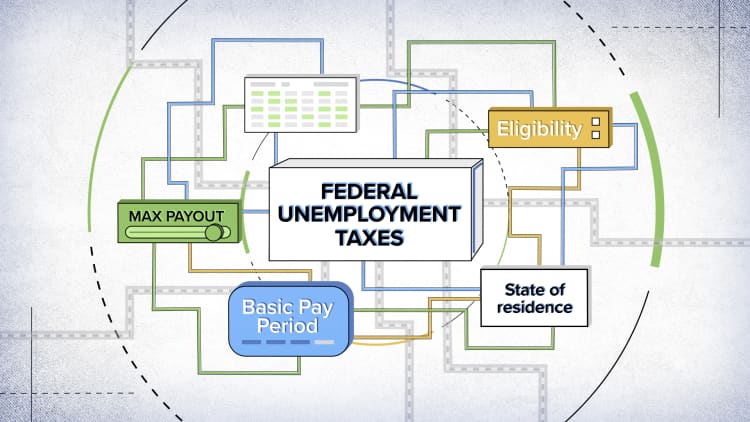Millions of Americans are hurtling into a period of unemployment that often carries more financial risk.
Economists generally consider long-term unemployment as a period of joblessness that lasts longer than 26 weeks, or six months.
From a financial perspective, this benchmark is important for a few reasons.
More from Personal Finance:
$300 unemployment boost may last for only for 3 weeks
What's ahead for your taxes if Biden wins the election
Postal service battles could mean delays for stimulus checks
For one, it's more likely people who are out of work for this long a period of time have depleted savings (if they had any to start) or taken on credit-card or other debt to pay for everyday living expenses.
Longer unemployment spells also hurt your chances of finding a new job, according to Till von Wachter, an economics professor at the University of California, Los Angeles.
Even if you find a new job, it often comes with lower wages relative to prior work, he said.
"We're worried the longer the unemployment spell lasts, the longer the financial hardship among households," said von Wachter, who's also director of the California Policy Lab.
Long-term unemployment
Jobless levels have fallen a bit from their April peak, when businesses were forced to shut to contain the spread of the coronavirus pandemic.
The country's 10.2% unemployment rate, however, is still higher than the Great Recession peak.
The improvement masks a concerning trend in unemployment duration.

The number of people unemployed for between 15 and 26 weeks grew by 4.6 million people in July, according to the Bureau of Labor Statistics. That's a 240% increase, to a total 6.5 million people.
These individuals aren't technically yet "long-term unemployed," but may soon be if they're unable to return to work — a tall order when there are three times as many unemployed people as there are job openings, according to the Bureau.
The number of long-term unemployed (those without a job for at least 27 weeks) increased by 110,000 people last month, to 1.5 million.
Unemployment benefits have helped absorb some of the financial shock associated with job loss.
States generally offer up to six months of benefits. Congress extended that by 13 weeks, through the Pandemic Emergency Unemployment Compensation program enacted in March. States also have "extended benefit" programs that kick in during periods of high unemployment, typically offering an extra 13 or 20 weeks of aid.
The share of workers collecting benefits through these programs has been rising, suggesting they're on the latter end of their aid.
There are about 1.2 million Americans getting benefits through the PEUC program, according to the Labor Department. Additionally, about 126,000 are collecting through the extended benefits program.
Both are highs for the current recession.
Unemployment benefits
After the end of the year, some of the federal unemployment programs enacted to deal with the current recession will lapse, absent a federal extension. That would leave unemployed workers with no financial assistance.
Even those able to collect unemployment may be struggling financially.
Jobless benefits typically replace less than half a worker's lost wages, giving them much less to live on.
Workers replaced just 38% of prior pay on unemployment benefits, on average, in the first quarter this year, according to the Labor Department.
A $600-a-week federal supplement to state benefits that began in April helped many to maintain their standard of living. Some people even got more than their lost wages as a result of the enhanced benefit.
But that subsidy lapsed in July, leading to a 65% cut in aid for the average worker. Some are subsisting on as little as $5 or $10 a week.
President Trump signed a measure in early August to give a $300 federal unemployment subsidy to those collecting benefits. But it's unclear when or if many will get that aid. So far, just seven states have been approved to offer it.
To some extent, the long-term jobless trend is to be expected. An increase in unemployment length fits the typical pattern of a recession, von Wachter said.
But the current recession is different in that unemployment has disproportionately hit lower-wage workers — who are less able to weather an economic shock — to a greater extent than past downturns, he said.
That's due to a large amount of service jobs being lost. That also means that the types of jobs people traditionally turn to take to make ends meet when unemployed — lower-paying service jobs, at a grocery store or coffee shop, for example — are not as readily available this recession, potentially taking away one safety net, von Wachter said.


